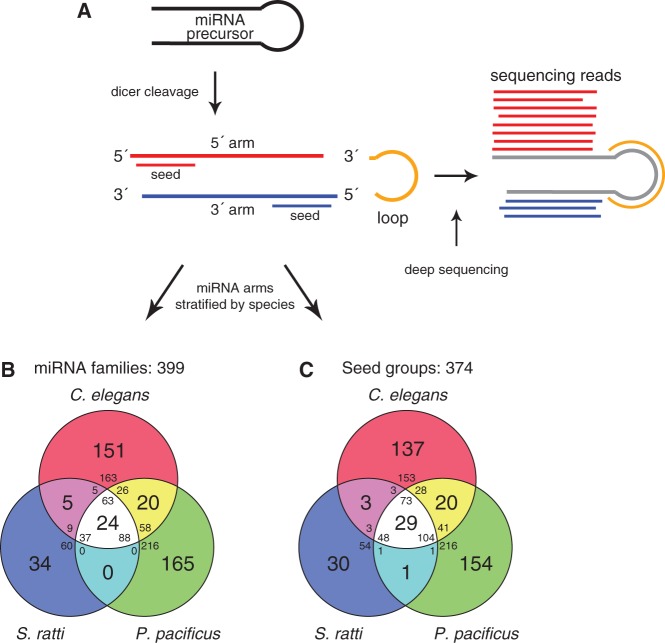Fig. 2.—
miRNA homology and seed conservation. (A) miRNA preprocessing gives rise to two potential seed sequences (modified from Friedländer et al. 2008). (B) A total of 725 precursors were stratified into 399 gene families by sequence similarity of the full miRNA arm based on the most conserved arm. If both arms of a miRNA were annotated, the arm contained in the largest group (inferred from all 1,335 miRNA 5′- and 3′-arms) was considered. If group sizes were equal, the arm with the highest degree of conservation was considered (see definition of miRNA ages in supplementary methods, Supplementary Material online, for details). In case of equal conservation level, a miRNA arm was randomly chosen. (C) A total of 725 precursors were stratified into 374 seed groups by perfect seed sequence identity (positions 2–8) considering seeds based on the most conserved miRNA arm of a precursor. The miRNA arm was selected as explained earlier.

